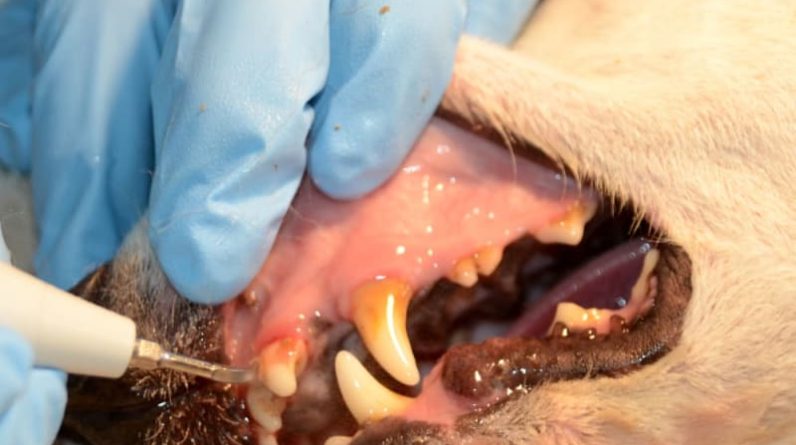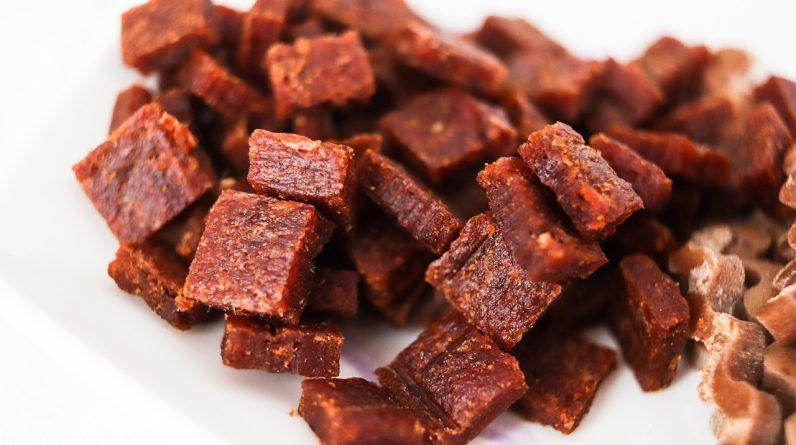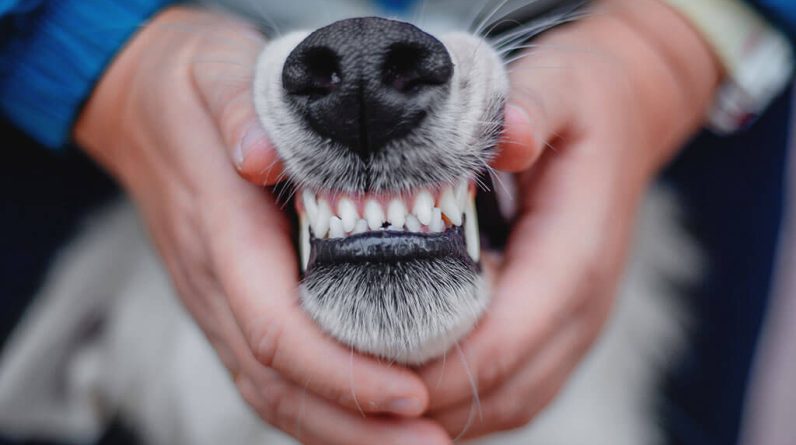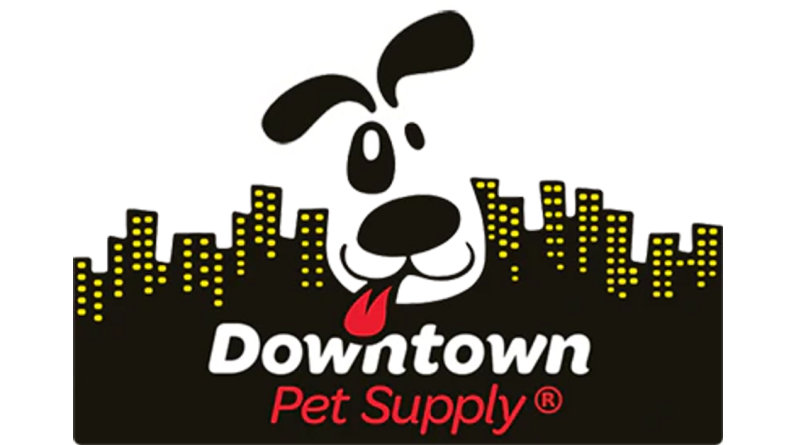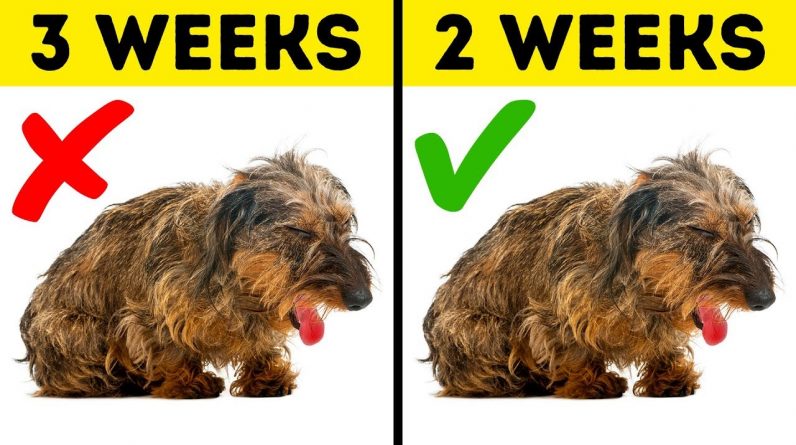Maintaining your dog’s dental hygiene is essential for their overall health, but professional cleanings can be costly. Luckily, there are free or low-cost options available across the USA that can help pet owners care for their dogs’ teeth without breaking the bank.
Key Takeaways: Quick Answers About Affordable Dog Teeth Cleaning
- Where can I find low-cost dog teeth cleaning? Nationwide options include Humane Societies, SPCA locations, and nonprofit clinics.
- What services are included in low-cost cleanings? 🦷 Scaling, polishing, and sometimes extractions.
- Are these services safe? Yes, most clinics use licensed veterinarians or trained technicians.
- How much do low-cost services cost? Prices range from $20 to $75 for basic cleaning, with some services offered for free.
- Do nonprofits offer discounts? Many nonprofits offer sliding-scale fees or free care based on income.
Top 20 Free or Low-Cost Dog Teeth Cleaning Services 🦷
| Organization | Location | Phone Number | Services Offered |
|---|---|---|---|
| Humane Society of the United States | Nationwide | (202) 452-1100 | Free dental cleanings for low-income households. |
| SPCA of Texas | Texas | (214) 742-7722 | Dental cleanings starting at $50, with income-based discounts. |
| PAWS Chicago | Illinois | (773) 935-7297 | Free dental services for Chicago residents; appointments may need to be booked months in advance. |
| Oregon Humane Society | Oregon | (503) 285-7722 | Dental cleanings for $30, open to all with available discounts. |
| UC Davis Veterinary School | California | (530) 752-1393 | Dental services supervised by expert veterinarians, starting at $75. |
| Animal Rescue Foundation | Florida | (561) 784-4792 | Dental cleanings for $25, income-based; also offers routine vaccinations. |
| Arizona Humane Society | Arizona | (602) 997-7585 | Free dental care focusing on senior dogs. |
| ASPCA Community Clinics | New York | (844) 692-7722 | Free dental services; appointment required. |
| Denver Dumb Friends League | Colorado | (303) 751-5772 | Dental cleanings for $40, income-based; includes wellness exam. |
| North Shore Animal League | New York | (516) 883-7575 | Dental services for $60, limited to certain zip codes; vaccinations offered at a discount. |
| Animal Humane Society | Minnesota | (952) 435-7738 | Low-cost dental cleanings and extractions; additional discounts for qualifying incomes. |
| Pet Dental Services | Nationwide | (866) 561-6717 | Non-anesthetic teeth cleanings for dogs; great for regular maintenance. |
| Best Friends Animal Society | Nationwide | (435) 644-2001 | Low-cost dental care as part of wellness programs; inquire about availability. |
| Mobile Veterinary Clinics | Varies by location | Varies | Low-cost cleanings offered at community events nationwide; check local listings. |
| VCA Animal Hospitals | Nationwide | (800) 822-7387 | Offers payment plans and CareCredit for dental cleanings; inquire about financing options. |
| Animal Birth Control Clinic | Texas | (254) 776-7303 | Provides affordable dental and preventative care services. |
| Pet Community Center | Tennessee | (615) 512-5001 | Offers sliding scale fees for dental services based on income. |
| San Francisco SPCA | California | (415) 554-3000 | Provides low-cost dental services, including extractions. |
| Animal Emergency Clinic | Washington | (253) 474-0791 | Offers emergency dental services, including extractions. |
| American Veterinary Medical Foundation | Nationwide | (800) 248-2862 | Provides financial assistance for essential veterinary care, including dental. |
How to Qualify for Free or Discounted Services?
- Income-Based Programs: Many organizations, such as the Humane Society and SPCA branches, offer sliding-scale fees based on household income. Be prepared to provide proof of income during registration.
- Senior Dogs: Some programs focus on providing free or low-cost dental care for senior dogs, as they are more prone to dental issues.
- Community Clinics: Local clinics often hold discounted wellness days or events where dental cleanings are provided at reduced costs.
Tip: Contact your local shelters and rescues to learn about additional resources in your area.
| Qualification Type | What to Provide | Where to Apply |
|---|---|---|
| Income-Based | Proof of income, such as pay stubs | SPCA, Humane Society |
| Senior Dog Care | Proof of pet’s age | Humane Society or nonprofit clinics |
| Community Clinics | Pre-registration for events | Local animal welfare groups |
What’s Included in Low-Cost Cleanings?
- Basic Cleaning: 🦷 Scaling and polishing to remove plaque and tartar buildup.
- Oral Exams: Some programs include a wellness check to identify any underlying dental issues.
- Extractions: 🩺 If necessary, certain clinics include minor extractions as part of the service.
- Preventative Advice: Recommendations for at-home care to extend the time between cleanings.
Tip: Ask for a detailed breakdown of services before booking to ensure your dog’s needs are met.
| Service Type | What It Includes | Example Provider |
|---|---|---|
| Basic Cleaning 🦷 | Removes plaque and tartar | Pet Dental Services |
| Oral Exam | Checks for signs of gum disease | Denver Dumb Friends League |
| Extractions 🩺 | Removes damaged teeth | San Francisco SPCA |
FAQs About Free or Low-Cost Dog Teeth Cleaning
| Question | Answer |
|---|---|
| Are these services safe? | Yes, most providers employ licensed vets or trained technicians. |
| Can all dogs qualify? | Age, income, and health may affect eligibility; call ahead to confirm. |
| How long does the procedure take? | ⏰ Basic cleanings take about 30–60 minutes; extractions may require longer. |
| Are follow-ups included? | Some programs include follow-up exams; ask your provider for details. |
Comment 1: “How can I prepare my dog for a low-cost dental cleaning?” 🦷
Preparing your dog for a dental cleaning is crucial, especially if it involves anesthesia or unfamiliar environments. Here’s a step-by-step guide:
- Schedule a Pre-Cleaning Exam: 🩺 Book a wellness checkup to ensure your dog is healthy enough for the procedure. This is especially important for senior dogs or those with chronic conditions.
- Fast Before Anesthesia: ⏳ If anesthesia is required, follow the clinic’s fasting guidelines—usually no food for 8–12 hours before the procedure, though water may be allowed.
- Brush Their Teeth Regularly: 🪥 Introduce toothbrushing several weeks before the cleaning to reduce plaque and tartar, making the process easier. Use a dog-specific toothbrush and toothpaste.
- Acclimate to the Environment: Visit the clinic in advance, allowing your dog to sniff around and become familiar with the surroundings. This can reduce anxiety on the day of the procedure.
- Provide Comfort Items: Bring a favorite toy or blanket to help your dog feel secure during the visit.
Tip: If your dog is anxious, consult your vet about calming supplements or pheromone sprays to make the experience smoother.
| Preparation Step | Why It’s Important | What to Do |
|---|---|---|
| Pre-Cleaning Exam 🩺 | Ensures your dog is fit for cleaning | Schedule 1–2 weeks before the procedure |
| Fasting Before Anesthesia ⏳ | Prevents complications | Follow vet or clinic instructions |
| Acclimate to Clinic | Reduces anxiety | Visit clinic beforehand |
Comment 2: “What’s the difference between low-cost and full-price dental services?”
Low-cost dental services can provide essential care, but there are some differences compared to full-price options. Here’s a breakdown:
- Scope of Services: 🦷 Low-cost clinics often focus on basic cleaning and preventative care. Full-price clinics may offer more comprehensive services like dental X-rays, advanced gum treatments, or extensive extractions.
- Equipment and Technology: Full-price services often use state-of-the-art tools, while low-cost providers may have more basic setups. However, licensed vets ensure safety and effectiveness regardless of cost.
- Anesthesia Use: ️ Many low-cost clinics avoid anesthesia to save costs, focusing on surface cleanings. Full-price services include anesthesia for deep cleaning or complex procedures.
- Location and Accessibility: Low-cost services are often provided through nonprofits or mobile clinics, while full-price options are typically at veterinary hospitals.
Tip: Choose based on your dog’s needs—low-cost services work for routine care, but advanced issues may require full-price options.
| Feature | Low-Cost Services | Full-Price Services |
|---|---|---|
| Scope 🦷 | Basic cleaning and polishing | Advanced treatments and X-rays |
| Anesthesia ️ | Often skipped for savings | Included for deeper cleaning |
| Accessibility | Community clinics or nonprofits | Private veterinary hospitals |
Comment 3: “Are there risks with low-cost dental services?” ️
While low-cost dental services are generally safe, there are some factors to consider:
- Limited Services: 🦷 These clinics often don’t provide dental X-rays or address below-the-gumline tartar, which could leave some issues untreated.
- Anesthesia-Free Limitations: Non-anesthetic cleanings are effective for surface-level cleaning but may not address advanced periodontal disease.
- Overbooking: Popular low-cost clinics may experience high demand, potentially resulting in shorter appointment times or longer waitlists.
- Quality Assurance: 🩺 Most low-cost providers employ licensed vets or certified technicians, ensuring safety and care. However, always verify the clinic’s credentials.
Tip: For dogs with advanced dental issues, prioritize clinics offering deep cleaning under anesthesia.
| Risk | Why It’s a Concern | How to Mitigate |
|---|---|---|
| Limited Services 🦷 | May not address complex issues | Follow up with a vet if problems persist |
| Anesthesia-Free | Can’t clean below the gumline | Use for maintenance only |
| Overbooking | May rush appointments | Book well in advance |
Comment 4: “How can I find local free or low-cost dental clinics?”
Finding affordable dental clinics near you requires research and planning. Here’s how to get started:
- Use National Directories: ️ Organizations like the Humane Society, ASPCA, and Best Friends Animal Society provide searchable directories for low-cost services.
- Check Local Shelters: Many shelters and rescues partner with veterinary providers to offer discounted dental care for community pets.
- Contact Veterinary Schools: Schools like UC Davis or Cornell often provide low-cost care supervised by experienced veterinarians.
- Attend Wellness Events: Mobile clinics and pop-up wellness events frequently offer discounted dental cleanings. Check your city’s pet event calendar.
- Ask Your Vet: 🩺 Some private practices offer sliding-scale fees or payment plans for clients in need.
Tip: Book appointments early, as these services are often in high demand.
| Resource | How It Helps | Examples |
|---|---|---|
| National Directories ️ | Lists low-cost providers nationwide | ASPCA, Humane Society |
| Veterinary Schools | Offers affordable supervised care | UC Davis, Cornell |
| Wellness Events | Provides pop-up cleaning services | Local pet expos or fairs |
Comment 5: “What if my dog needs extractions during a low-cost cleaning?” 🦷
Extractions can sometimes be necessary during dental cleanings to prevent pain and infection. Here’s how it works at low-cost clinics:
- Pre-Assessment: 🩺 Most clinics perform an oral exam before cleaning to identify teeth that may require removal.
- Cost of Extractions: While basic cleanings may be free or low-cost, extractions typically incur an additional fee. Prices can range from $50 to $200 per tooth depending on complexity.
- Advanced Cases: ️ If the clinic lacks resources for complicated extractions, they may refer you to a full-service veterinary hospital.
- Post-Extraction Care: Ensure your dog receives pain management and follow-up care to aid healing. Some clinics include these in their package, while others charge separately.
Tip: Always ask for a cost estimate and detailed care instructions if extractions are needed.
| Step | What to Expect | Cost or Care Notes |
|---|---|---|
| Pre-Assessment 🩺 | Identifies problem teeth | Usually included in cleaning fee |
| Extractions | Removes damaged teeth | Additional cost per tooth |
| Post-Care | Ensures pain-free recovery | May include meds or follow-up visits |
Comment 6: “How do I know if my dog qualifies for free dental cleanings?”
Eligibility for free or low-cost dental services depends on various factors. Here’s how you can determine if your dog qualifies:
- Income Requirements: Many nonprofits, such as the Humane Society, offer free dental cleanings to low-income households. Proof of income, such as pay stubs or government assistance documentation, is often required.
- Community-Based Clinics: Some organizations provide free services to residents of specific areas or zip codes as part of their community outreach programs.
- Senior Dog Programs: Dogs aged 7 years or older may qualify for free or discounted cleanings at select clinics, as they are more prone to dental issues.
- Special Events: Pop-up clinics or wellness days often offer free services on a first-come, first-served basis. These events may have limited spots, so early registration is essential.
Tip: Contact your local shelters or nonprofit clinics to ask about specific eligibility requirements and gather the necessary documentation beforehand.
| Eligibility Factor | What It Covers | Example Programs |
|---|---|---|
| Income-Based | Free for qualifying low-income households | Humane Society, ASPCA |
| Geographic Location | Services for specific areas | Local SPCA or shelters |
| Senior Dogs | Discounts for aging pets | Arizona Humane Society |
Comment 7: “Are anesthesia-free cleanings as effective as traditional methods?”
Anesthesia-free dental cleanings have pros and cons, and their effectiveness depends on your dog’s dental condition. Here’s a closer look:
- Best for Preventative Care: 🦷 Non-anesthetic cleanings effectively remove surface-level plaque and tartar but cannot address buildup below the gumline. They are ideal for dogs with healthy gums and minimal tartar.
- Limitations: For dogs with advanced periodontal disease or infections, anesthesia-free cleanings cannot provide the deep scaling and gum treatment needed to resolve these issues.
- Stress-Free Option: These procedures are less invasive and eliminate the risks associated with anesthesia, making them suitable for dogs with certain health conditions.
- Follow-Up Requirements: Dogs undergoing anesthesia-free cleanings should still receive regular checkups to monitor gum health and catch deeper issues.
Tip: Use anesthesia-free cleanings as a supplemental service between professional deep cleanings under anesthesia.
| Aspect | Anesthesia-Free Cleaning | Traditional Cleaning |
|---|---|---|
| Depth of Cleaning 🦷 | Surface-level plaque removal | Removes plaque/tartar below gumline |
| Stress for Dogs | Minimal | Requires anesthesia |
| Suitable For | Preventative care | Advanced dental disease |
Comment 8: “What signs indicate my dog needs a dental cleaning immediately?” 🩺
Certain signs indicate your dog’s oral health may need urgent attention. Here’s what to look for:
- Persistent Bad Breath: While mild breath odor is normal, a strong, foul smell could indicate gum disease or infection.
- Red or Bleeding Gums: Inflamed or bleeding gums often signal gingivitis, which can progress if untreated.
- Tartar Build-Up: 🦷 Visible yellow or brown deposits on teeth, especially near the gumline, require professional removal.
- Difficulty Eating: Dropping food, chewing on one side, or avoiding hard treats can indicate pain caused by dental problems.
- Behavioral Changes: Increased irritability, pawing at the mouth, or excessive drooling may be signs of oral discomfort.
Tip: If your dog shows any of these symptoms, schedule a cleaning immediately to prevent complications.
| Symptom | What It Means | Recommended Action |
|---|---|---|
| Persistent Bad Breath | Potential gum disease or infection | Schedule a professional cleaning |
| Red or Bleeding Gums | Early-stage periodontal disease | Consult your vet |
| Difficulty Eating | Dental pain or loose teeth | Seek immediate veterinary care |
Comment 9: “What aftercare is needed for dogs post-cleaning?”
Proper aftercare ensures your dog heals quickly and maintains their oral health following a dental cleaning. Here’s what you need to do:
- Monitor Eating Habits: After anesthesia, your dog may have a reduced appetite. Offer soft food for the first 1–2 days to avoid irritation.
- Provide Pain Relief: If your dog had extractions, your vet might prescribe pain medication or antibiotics. Administer these as directed.
- Prevent Licking or Chewing: Avoid giving hard toys or chews for at least a week to allow gums to heal.
- Start an At-Home Routine: 🪥 Begin brushing your dog’s teeth a few days after the procedure to prevent future tartar buildup. Use pet-safe toothpaste and introduce brushing gradually.
- Follow-Up Appointments: 🩺 Schedule a follow-up with your vet to ensure healing is on track and address any lingering issues.
Tip: Keep water accessible at all times, as hydration aids recovery and soothes the mouth.
| Aftercare Step | Why It’s Important | How to Implement |
|---|---|---|
| Soft Food | Prevents gum irritation | Use wet food or soaked kibble |
| Pain Management | Ensures a comfortable recovery | Administer prescribed meds |
| Follow-Up 🩺 | Confirms healing progress | Schedule 1–2 weeks post-cleaning |
Comment 10: “How can I make at-home dental care more effective?” 🪥
At-home dental care plays a vital role in maintaining your dog’s oral health. Here’s how to optimize your efforts:
- Daily Brushing: 🪥 Brush your dog’s teeth daily or at least 3–4 times per week using a dog-specific toothbrush and toothpaste.
- Dental Chews: Offer dental chews or toys designed to scrape plaque while your dog chews. Look for products approved by the Veterinary Oral Health Council (VOHC).
- Water Additives: Use dental water additives that target bacteria and reduce tartar formation.
- Routine Inspections: Check your dog’s mouth weekly for signs of redness, swelling, or tartar buildup.
- Healthy Diet: Include crunchy kibble or dental diets that naturally clean teeth during chewing.
Tip: Start at-home care early in your dog’s life to establish a routine and minimize resistance.
| At-Home Care Tip | Why It Helps | Recommended Products |
|---|---|---|
| Daily Brushing 🪥 | Prevents plaque buildup | Pet-safe toothpaste, soft brushes |
| Dental Chews | Reduces tartar while chewing | VOHC-approved chews |
| Water Additives | Targets bacteria and freshens breath | Dental water solutions |
Comment 11: “Can a poor diet cause dental problems in dogs?” 🦷
Yes, a poor diet can significantly contribute to dental problems in dogs. Here’s how nutrition impacts their oral health:
- Plaque Buildup from Soft Foods: Diets heavy in soft or wet food can stick to the teeth, creating an environment for bacteria to thrive and forming plaque.
- Nutrient Deficiencies: Dogs lacking essential nutrients like calcium, phosphorus, and vitamins (e.g., vitamin D) may experience weaker teeth and gums, making them more prone to disease.
- High-Sugar Ingredients: Some low-quality dog foods and treats contain artificial sugars that accelerate tartar buildup and gum inflammation.
- Lack of Chewing Action: Crunchy kibble and dental chews promote natural cleaning by scraping plaque from teeth. Dogs on a purely soft-food diet miss this benefit.
Tip: Opt for high-quality dog food that includes crunchy textures and supports overall oral health. Consider rotating in dental-specific diets if your dog is prone to tartar buildup.
| Diet Impact | How It Affects Teeth | How to Prevent Issues |
|---|---|---|
| Soft Foods | Encourages plaque and tartar | Balance with crunchy kibble |
| Sugar Content | Leads to tooth decay | Avoid treats with added sugars |
| Chewing Action | Reduces plaque naturally | Use kibble or dental chews |
Comment 12: “How does periodontal disease progress in dogs?” 🩺
Periodontal disease progresses in stages, each with increasing severity. Here’s a detailed look at the progression:
- Stage 1 – Gingivitis: Plaque buildup on the gumline causes inflammation and redness. Gums may bleed during brushing.
- Stage 2 – Early Periodontitis: 🦷 Tartar hardens on the teeth, and gums recede slightly, creating pockets where bacteria grow. Bad breath becomes noticeable.
- Stage 3 – Moderate Periodontitis: Infection spreads below the gumline, damaging the tissues that support teeth. Dogs may experience pain and have loose teeth.
- Stage 4 – Advanced Periodontitis: ️ Severe infection causes significant bone loss, loose or missing teeth, and systemic health risks as bacteria enter the bloodstream.
Tip: Early intervention is crucial. Regular professional cleanings and at-home care can halt or reverse gingivitis before it progresses to advanced stages.
| Stage | Symptoms | Recommended Action |
|---|---|---|
| Stage 1 – Gingivitis | Red, inflamed gums | Start brushing and schedule cleaning |
| Stage 2 – Early Periodontitis 🦷 | Bad breath, gum recession | Professional cleaning recommended |
| Stage 4 – Advanced Periodontitis ️ | Tooth loss, systemic risks | Immediate veterinary care |
Comment 13: “Are there specific breeds more prone to dental issues?” 🩺
Yes, some dog breeds are genetically predisposed to dental problems. Here’s why and which breeds are at higher risk:
- Small Breeds: Dogs like Chihuahuas, Dachshunds, and Toy Poodles often have crowded teeth, which makes cleaning difficult and increases tartar buildup.
- Brachycephalic Breeds: Flat-faced breeds like Bulldogs, Pugs, and Shih Tzus frequently have misaligned teeth due to their short jaws, leading to gum issues.
- Toy Breeds: These breeds are prone to early tooth loss due to their small mouths and often require more frequent dental care.
- Working Breeds: ️️ Dogs like Retrievers and German Shepherds may develop wear and tear on their teeth from carrying items or chewing excessively.
Tip: If you own a high-risk breed, prioritize regular dental cleanings and invest in dental chews designed for their specific needs.
| Breed Type | Dental Challenges | Care Recommendations |
|---|---|---|
| Small Breeds | Crowded teeth, tartar buildup | Brush daily and schedule cleanings |
| Brachycephalic | Misaligned teeth, gum inflammation | Use dental wipes and monitor gums |
| Toy Breeds | Early tooth loss | Start preventative care early |
Comment 14: “What are some early warning signs of gum disease in dogs?”
Gum disease can develop silently, but early warning signs can help you catch it before it worsens:
- Bad Breath: Persistent, foul-smelling breath is often the first sign of bacterial buildup.
- Discolored Teeth: 🦷 Yellow or brown tartar along the gumline signals a need for cleaning.
- Red or Swollen Gums: Gums that are inflamed or bleed easily during brushing indicate gingivitis.
- Changes in Eating Habits: Hesitation to eat or chew on hard treats suggests discomfort from dental pain.
- Excessive Drooling: Dogs may drool more frequently if their gums are irritated.
Tip: Schedule a dental exam if you notice any of these signs to prevent progression into advanced gum disease.
| Sign | What It Indicates | Action to Take |
|---|---|---|
| Bad Breath | Plaque or gum disease | Professional cleaning |
| Red Gums | Early gingivitis | Start daily brushing |
| Eating Changes | Tooth pain or sensitivity | Vet exam to address the issue |
Comment 15: “How does professional cleaning prevent systemic health issues?”
Professional dental cleanings do more than just keep your dog’s mouth healthy—they protect their overall health. Here’s how:
- Prevents Bacterial Spread: 🦠 Oral bacteria can enter the bloodstream through diseased gums, potentially affecting the heart, kidneys, and liver.
- Reduces Inflammation: Chronic gum inflammation can strain the immune system and exacerbate other health conditions.
- Improves Nutrition: Healthy teeth and gums make it easier for dogs to chew and digest food properly, ensuring they receive all necessary nutrients.
- Boosts Longevity: Studies show that dogs with clean teeth and healthy gums tend to live longer, healthier lives.
Tip: Pair professional cleanings with routine at-home care to maximize your dog’s overall well-being.
| Benefit | Why It Matters | How It Helps Overall Health |
|---|---|---|
| Prevents Bacterial Spread 🦠 | Protects internal organs | Reduces risk of systemic infections |
| Reduces Inflammation | Supports immune health | Minimizes chronic health strain |
| Improves Chewing | Aids in digestion and nutrition | Supports healthy weight and energy |
Maintaining your dog’s dental hygiene is essential for their overall health, but professional cleanings can be costly. Luckily, there are free or low-cost options available across the USA that can help pet owners care for their dogs’ teeth without breaking the bank. Key Takeaways: Quick Answers About Affordable Dog Teeth Cleaning Where can I


